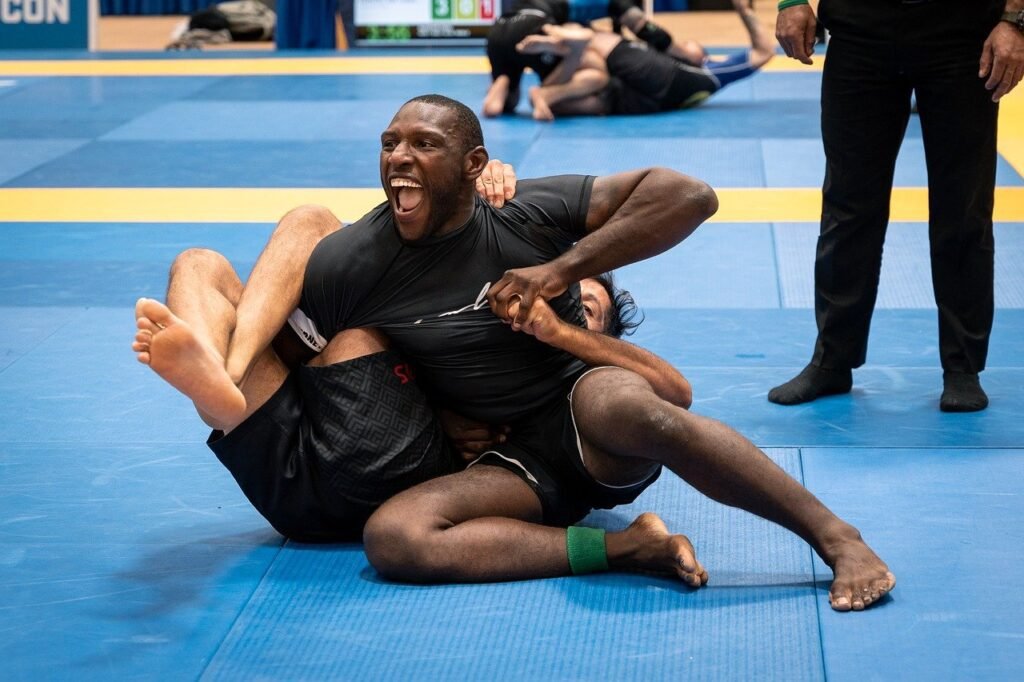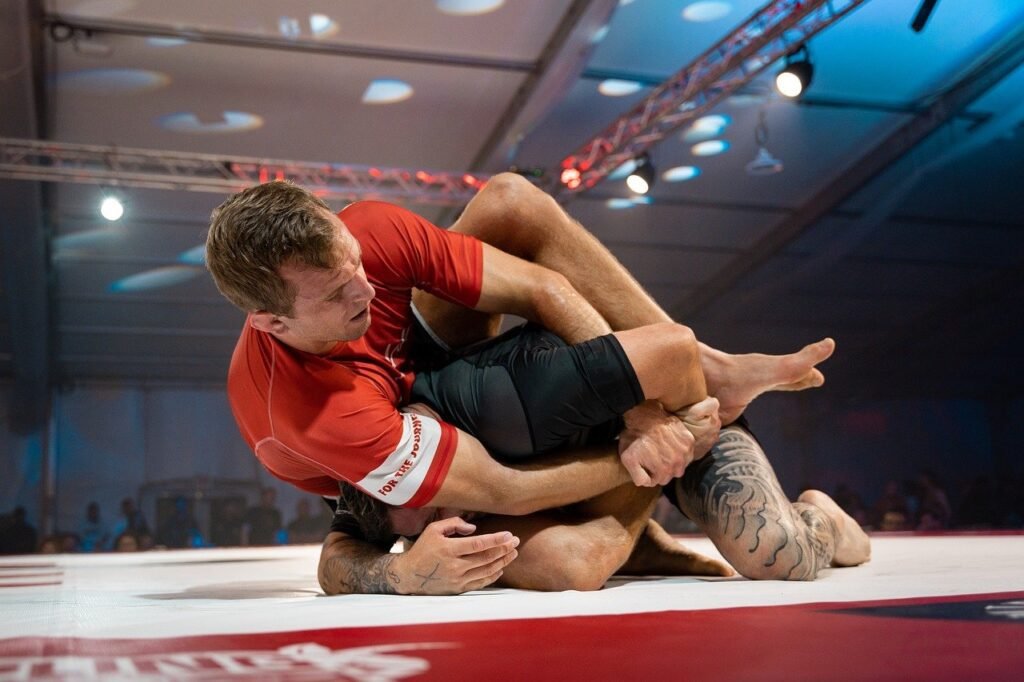Welcome to “Advanced Submission Defense: Key Tactics for Escaping Submissions”! In this article, you’ll discover the essential techniques and strategies that can help you break free from tight holds and precarious situations. By mastering these advanced defenses, you will not only enhance your grappling skills but also gain the confidence to stay calm under pressure. Get ready to elevate your game and learn how to turn the tables when the going gets tough. Have you ever found yourself trapped in a tight submission, feeling your options slip away with each passing second? Escaping submissions in grappling or mixed martial arts can feel like an insurmountable challenge, but with the right tactics and mindset, you can turn seemingly inevitable defeat into a successful escape. Let’s dive into the fascinating world of advanced submission defense and explore the key tactics you need in your arsenal to improve your game.

Understanding the Importance of Submission Defense
Why Is Submission Defense Critical?
First things first, why should you prioritize submission defense? Well, even the most aggressive fighters need a robust defense strategy. Submission defense ensures you stay in the game longer, giving you more opportunities to turn the tide. Mastering submission escapes doesn’t just build your defensive skills; it improves your overall awareness, timing, and resilience on the mat.
The Mental Game Behind Escaping Submissions
Before diving into technique, let’s talk about mindset. When trapped in a submission, panic can be your worst enemy. Staying calm and collected allows you to think clearly and execute your escape plan efficiently. Confidence and mental toughness play significant roles in your ability to defend against submissions successfully.
Key Tactics for Escaping Submissions
Early Recognition
The earlier you recognize a submission attempt, the easier it is to escape. By being aware of your opponent’s movements and positioning, you can initiate your defense before the submission is locked in completely.
Common Submission Setups to Recognize Early
| Submission | Common Setup Moves |
|---|---|
| Armbar | Opponent isolates your arm, swings leg over your head |
| Triangle Choke | Opponent controls your wrist, pivots to angle their hips |
| Guillotine Choke | Opponent underhooks your neck, shifts weight forward |
By understanding the setups, you can be proactive rather than reactive, allowing you to counter before you’re in deep danger.
Positioning and Posture
Maintaining strong posture and proper positioning can mean the difference between escaping and tapping. Here’s how you can use positioning to your advantage:
- Keep Your Base: Whether you’re in a bottom or top position, maintaining a strong base keeps you stable and makes it harder for your opponent to submit you.
- Hands in the Right Place: Your hands should always be working to protect your neck and limbs. For example, when defending against a triangle choke, your hand should work to relieve pressure on your neck.
Breathing and Relaxation
Interestingly, proper breathing techniques can greatly improve your defense. Controlled breathing helps maintain your composure and prevents panicking. Relaxing your muscles can also make it more challenging for your opponent to apply a submission tightly.
Counter-Movements and Timing
Effective escapes often rely on counter-movements and impeccable timing. Knowing when to bridge, shrimp, or roll can free you from your opponent’s grasp. Timing drills in training can be very beneficial in improving this aspect of your game.
Specific Submission Escapes
Armbar Escape
The armbar is one of the most common submissions you’ll face. Here’s a step-by-step guide for escaping an armbar:
- Grip and Stack: As soon as your opponent isolates your arm and starts to extend it, grip your hands together to buy time. Then, stack your weight on your opponent by driving your body forward.
- Head Pressure: Use your head to apply pressure to their leg that’s across your face. This makes it harder for them to extend fully.
- Shrimp and Pull: Begin to shrimp your hips towards your opponent and pull your trapped arm free.
Triangle Choke Escape
The triangle choke can be daunting, but escaping it is possible with the right approach:
- Posture Up: Immediately try to posture up to relieve pressure on your neck.
- Frame and Stack: Use your arms to frame against your opponent’s legs and stack them by driving your body weight forward.
- Angle Change: Adjust the angle to create space. Push their knee down and pivot your body to escape.
Guillotine Choke Escape
Escaping a guillotine requires quick response and smart positioning:
- Hand Fight: Hand fighting is crucial. Use your arms to create space and prevent the choke from sinking deeper.
- Head Position: Turn your head towards the choking arm to relieve pressure.
- Movement: Try to pass to the opposite side of their body (away from the choking arm) to neutralize their leverage.
Rear Naked Choke Escape
The rear naked choke is decisive, and knowing how to escape it can be lifesaving in a match:
- Hand Fight: Immediately grab the choking arm to create space for breathing.
- Tuck Chin and Protect Neck: Tuck your chin down to add an extra layer of defense.
- Hip Escape: Bridge and twist your body to escape the back mount.
Kimura Escape
Here’s how you can defend against a Kimura lock:
- Grip Your Own Belt/Shorts: To prevent your arm from being extended, grip your own belt or shorts.
- Roll Towards Opponent: Roll towards your opponent to relieve the pressure.
- Create Space: Use your free hand to push off and create space for an escape.
Advanced Concepts and Techniques
Counter-Attacks
Advanced submission defense doesn’t just stop at escaping; it can also involve counter-attacks. For example, during an armbar escape, you can transition to taking your opponent’s back once you’re free.
Flow Drills
Flow drills combine various escapes and transitions into one fluid sequence. These drills can help you become more comfortable with moving between different positions and submissions, boosting your overall defense game.
Positional Sparring
Positional sparring focuses on specific scenarios, like starting from a mounted position or in a locked-in guillotine. This targeted practice can help you become more adept at escaping from those challenging spots.

Tips for Continuous Improvement
Regular Sparring
Regularly sparring with training partners who have varying skill levels can expose you to different submission attempts, helping you adapt and refine your defense techniques.
Studying Fights and Matches
Watching professional fighters or high-level grapplers can offer you insights into effective submission escapes. Analyze their techniques and strategies to incorporate them into your own game.
Private Lessons
Consider taking private lessons specifically focused on submission defense. Personalized instruction can address individual weaknesses and accelerate your learning curve.
Common Mistakes and How to Avoid Them
Panicking Under Pressure
It’s easy to panic when caught in a tight submission, but remaining calm gives you a higher chance of escaping. Practice breathing techniques and train under pressure to get used to high-stress situations.
Neglecting Fundamentals
Advanced tactics are vital, but don’t neglect the basics. Strong fundamentals in posture, positioning, and controlling your base are the foundation of effective submission defense.
Poor Training Routine
Having an inconsistent training routine can limit your growth. Make sure to incorporate regular, focused sessions on submission defense to keep improving.

Physical and Mental Conditioning
Strength Training
Building core and limb strength can make your defense more resilient. Strong muscles can better withstand isolation and pressure, making it harder for your opponent to finish submissions.
Flexibility
Flexibility in your hips, shoulders, and neck can make escapes easier by allowing a broader range of motion. Incorporate regular stretching and yoga into your routine.
Mental Toughness
Mental conditioning, such as visualization techniques and mindfulness exercises, can make a huge difference. Visualize yourself successfully escaping submissions and handling high-pressure situations calmly and efficiently.
Drills and Exercises
Escape Drills
Incorporate specific escape drills into your training. For example, drill the armbar escape repeatedly until it becomes second nature.
Resistance Drills
Resistance drills involve your partner applying varying degrees of pressure while you practice your escapes. This method helps you adapt to real-world scenarios.
Conclusion
Mastering advanced submission defense is a journey that requires dedication, practice, and a lot of mental fortitude. By understanding the principles of positioning, timing, and effective counter-movements, you can dramatically improve your chances of escaping even the tightest submissions.
Remember, it’s not just about getting out of a bad situation, but about transforming those moments into opportunities for counter-attacks and positional advantages. Regular sparring, targeted training, and continuous learning are your best allies in this endeavor. Happy training, and may your submission defense be as strong and versatile as your spirit!

